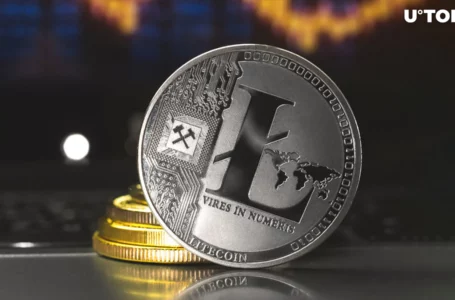
Yoav Weiss, an ether engineer, has provided some insights on Ethereum’s account abstraction roadmap.
Weiss provides an in-depth description of ERC-4337 in his post, along with the background behind its creation and the future goals of the Ether team.
https://x.com/yoavw/status/1786521585068671149
What is ERC-4337?
The Ethereum blockchain’s smart contract cryptocurrency wallets are made possible by the ERC-4337 standard, which also improves the user experience with decentralised apps (dApps).
The idea, which was presented by the Vitalik Buterin-led Ethereum team, seeks to replace externally-owned accounts (EOAs) with smart contracts as the exclusive place for assets.
A new “pseudo-transaction” object known as a UserOperation is introduced by ERC-4337. It facilitates transactions on behalf of users and keeps them in a “alt mempool” until confirmation. With this project, Ethereum’s usability for dApps and smart contract interactions will be significantly improved.
Brief history
Weiss talked on the beginnings and development of ERC-4337, showing how it went from Vitalik Buterin’s original idea to the present emphasis on account abstraction (AA) standardisation among Layer 2 (L2) networks.
The necessity for a protocol-level standard such as ERC-4337 arose from the realisation that wallet fragmentation was caused by different L2 networks’ unique implementations of AA.
Rollup Improvement Proposals (RIPs), such as RIP-7560, have been added to the road map with the goal of making it easier for L2 chains to transition to native AA. To expedite the implementation process and solve certain use cases like as validation, 2D nonces, aggregation, and upgrades for externally-owned accounts (EOAs), RIP-7560 is being developed into several optional RIPs.
Future
While L2 adoption has received most of the attention lately, there is recognition of the benefits of deploying AA on Ethereum’s Layer 1 (L1). As Ethereum L1 continues to use ERC-4337, the goal is to progressively move L2 chains to RIP-7560, guaranteeing compatibility and a seamless migration process over time.
In order to improve RIP-7560 and guarantee a successful deployment across Ethereum L1 and L2, Weiss underlined the significance of working with L1 core developers, L2 developers, and the larger community.
In particular, RIP-7560 seeks feedback from developers on the Ethereum Object Format (EOF) to optimise the clear division between protocol and user-facing elements.
Buterin’s take
Four primary objectives were listed by Vitalik Buterin for a reform of the Ethereum account system, with a focus on batching, quantum resistance, key rotation and deprecation, and support for sponsored transactions.
He emphasised the need to move the whole Ethereum Virtual Machine (EVM) ecosystem towards smart contract accounts (SCAs) by highlighting the shortcomings of Ethereum’s present end user account (EOA) paradigm in accomplishing these aims.
Buterin emphasised the need for unity and compatibility within Ethereum’s development environment and stated that he wished to avoid developing two distinct developer ecosystems for smart contract wallets and EOAs.
The Ethereum core developers understand how critical it is to both advance a longer-term roadmap for Ethereum’s progress and offer incremental feature updates to improve user experience in the near future.


















